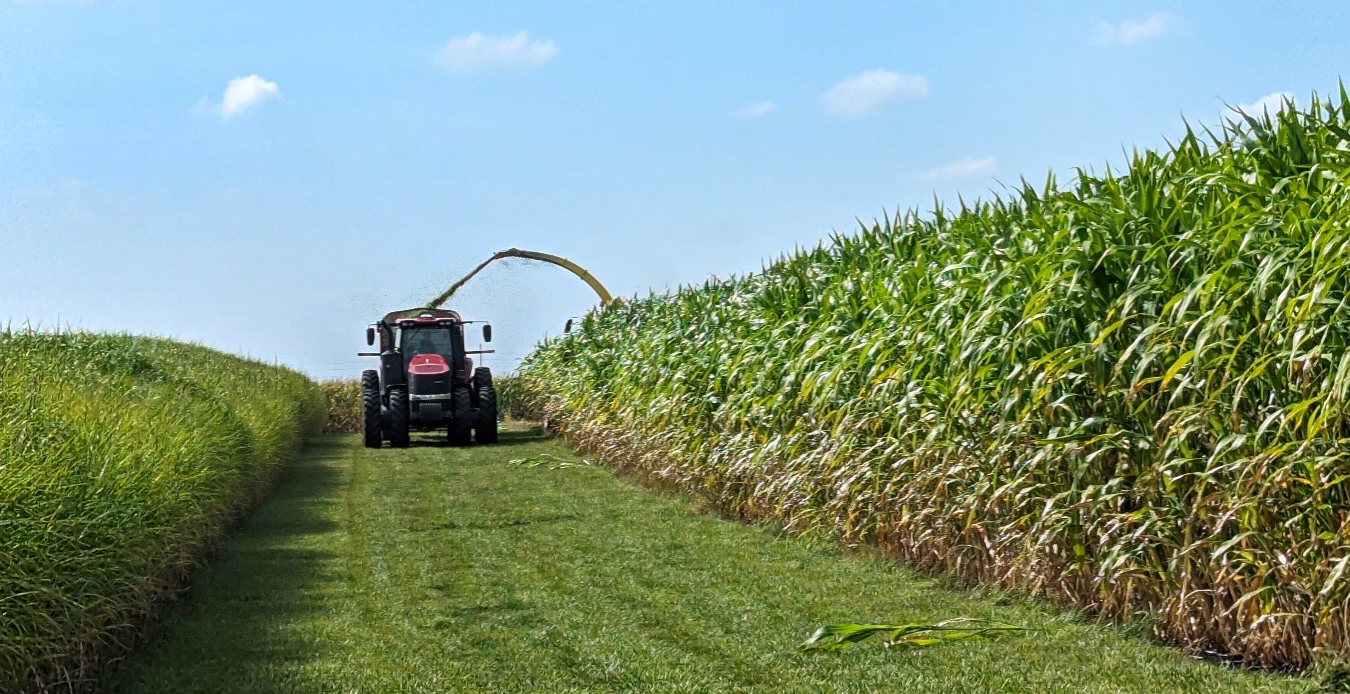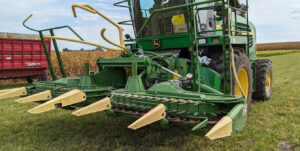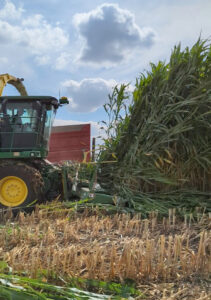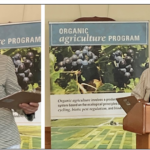

The team at Iowa State University’s Sustainable Advanced Bioeconomy Research Farm (SABR) recently harvested and hauled 400 tons of sorghum. Harvest was completed quicker and more efficiently due to the help of some new equipment. Nic Boersma along with co-authors Andy VanLoocke, Marshall McDaniel, and Brian Hornbuckle wrote a proposal for the ISU Strategic Seed Grants for Facilities and Equipment call for spending Hatch funds.
According to Boersma, a research scientist in agronomy and site manager at SABR, “This proposal had the distinct goal of increasing the biomass harvest capabilities at the University. Ultimately, this proposal was accepted for funding by ISU and the USDA. The Department of Agronomy also generously contributed matching funds.”

In order to improve harvesting capabilities, the team requested a new style of chopper header that was larger and the best in the world at harvesting biomass crops. Boersma said the header worked exceedingly well and is 50% larger than the previous header. Additionally, they requested a harvest lab sensor that, along with the GPS capabilities in the chopper, gives them the ability to map yields within the field. Finally, they requested a new dump trailer to drastically increase their capacity for hauling material out of the field. The wagon is 1.5-2 times larger than their existing forage wagons, which allows them to save fuel, time, and the need for fewer people to complete the job. Although the trailer did not arrive on time, it will be available for use for the next big biomass harvest, which will be Miscanthus in the spring.
The team’s vision for the new equipment is to enhance and streamline biomass logistics for any group working on dedicated biomass crops, so Boersma says to reach out for more information about using the equipment. “We also cannot say enough good things about the farm crews at ISU. Without Nathan Meyers, Kent Berns, Steve Jonas, and their crews, this work would not have been possible. Moving forward, we are committed to further improving our processes and capabilities to ensure we are the premiere destination for biomass crop research in the U.S.,” said Boersma.
Note: Research conducted at the SABR Farm is funded by the Center for Advanced Bioenergy and Bioproducts Innovation (CABBI). Photos and article provided by Nic Boersma. For more information, please contact Nic Boersma.
In photo at top: Sorghum harvest: Sorghum (on right side) was chopped using a forage harvester and new krone header. While Miscanthus (on left) is known for being a large warm-season grass, Sorghum is massive in comparison.





